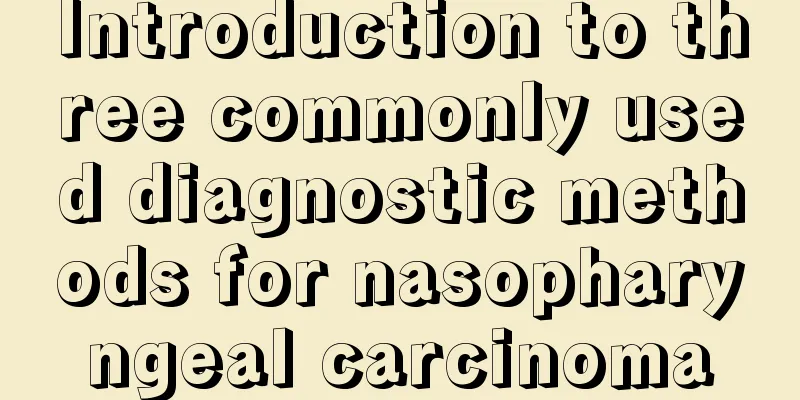Myotonic dystrophy mainly has these manifestations

|
When it comes to myotonic dystrophy, many people may not be particularly clear about it, but the incidence of this disease is still relatively high, and people of all ages may suffer from it. So what are its symptoms and signs? Please follow the editor. 1. Myotonic dystrophy type 1 usually develops symptoms in the 30s or 40s, affects more men than women, and has more severe symptoms. The main symptoms are muscle weakness, muscle atrophy and muscle rigidity, with the first two symptoms being more prominent. Muscle weakness is seen in skeletal muscles throughout the body, with weakness of the forearm and hand muscles accompanied by muscle atrophy and rigidity, foot drop and straddle-threshold gait, difficulty walking and easy falls; some patients have dysarthria and dysphagia. Muscular atrophy often affects the facial muscles, masseter muscles, temporalis muscles and sternocleidomastoid muscles. The patient has a long and thin face, prominent cheekbones, an axe-shaped face, and a long and slightly forward neck. Myotonia often occurs several years before or at the same time as muscular atrophy. Its distribution is not as extensive as congenital myotonia and is limited to the muscles of the upper limbs, face and tongue. 2. Occasionally, patients with myotonic dystrophy type 2 have clinical manifestations similar to those of myotonic dystrophy, but without the repetitive expansion of the myotonic protein kinase gene. The clinical features are similar to those of MD1, with significant weakness and atrophy of the distal limb muscles, facial muscles, and sternocleidomastoid muscles, accompanied by muscle rigidity. There may also be cataracts, frontal baldness, testicular atrophy, diabetes, heart abnormalities, and intellectual abnormalities. 3. Proximal myotonic myopathy presents with muscle rigidity, predominantly proximal muscle weakness and cataracts. The course of the disease is not as severe as MD1. Variants with severe muscle involvement and hearing loss have also been reported. There is no effective treatment for this disease, and treatment is symptomatic. Myotonia can be treated with membrane system stabilizing drugs, which can promote sodium pump activity, reduce intramembrane sodium ion concentration, increase resting potential, and improve myotonia; such as quinine sulfate, 300-400 mg, 3 times/d; procainamide 0.5-1g, 4 times/d; phenytoin 0.1g, 3 times/d; phenytoin may be the first choice for myotonic dystrophy because other drugs have adverse effects on cardiac conduction. |
<<: The main manifestations of overnutrition are these
>>: Progressive muscular dystrophy, clinical symptoms
Recommend
What kind of underwear can make your breasts look smaller?
Many girls have relatively large breasts, which a...
How to treat lung cancer effectively? Three professional treatment methods for lung cancer in hospitals
Lung cancer, also known as bronchogenic carcinoma...
TCM diagnosis of colon cancer
Colon cancer is a common malignant tumor in the g...
The harm of Huangjingzi pillow
Huangjingzi is also called Wuzhiganzi. It is a Ch...
What effect can the water from the root of loofah have
Luffa is a common vegetable in our daily life. It...
What are the causes of flushed face and excessive fire due to yin deficiency
Everything in life will change, including our bod...
What is the reason for mucus in the urethra?
What is the reason for mucus in the urethra? Most...
Abdominal distension after gastric cancer resection surgery
In life, many people who have gastric cancer will...
What are the benefits of taking a rose bath?
The obvious effects are regulating qi and relievi...
The best treatment for ovarian teratoma
What is the best treatment for ovarian teratoma? ...
What is the difference between prevalence and incidence
In daily life, we often hear the words prevalence...
What are the harms of holding your breath while sleeping on your stomach?
Many people often sleep on their stomachs at nigh...
Tips for cutting green onions
Chopped green onion is a very good ingredient. Ma...
The difference between lymph nodes and lymphoma
My aunt has not been in good health recently, esp...
What to do if you have long-term tinnitus in your ears
Most people experience tinnitus. Some people have...









